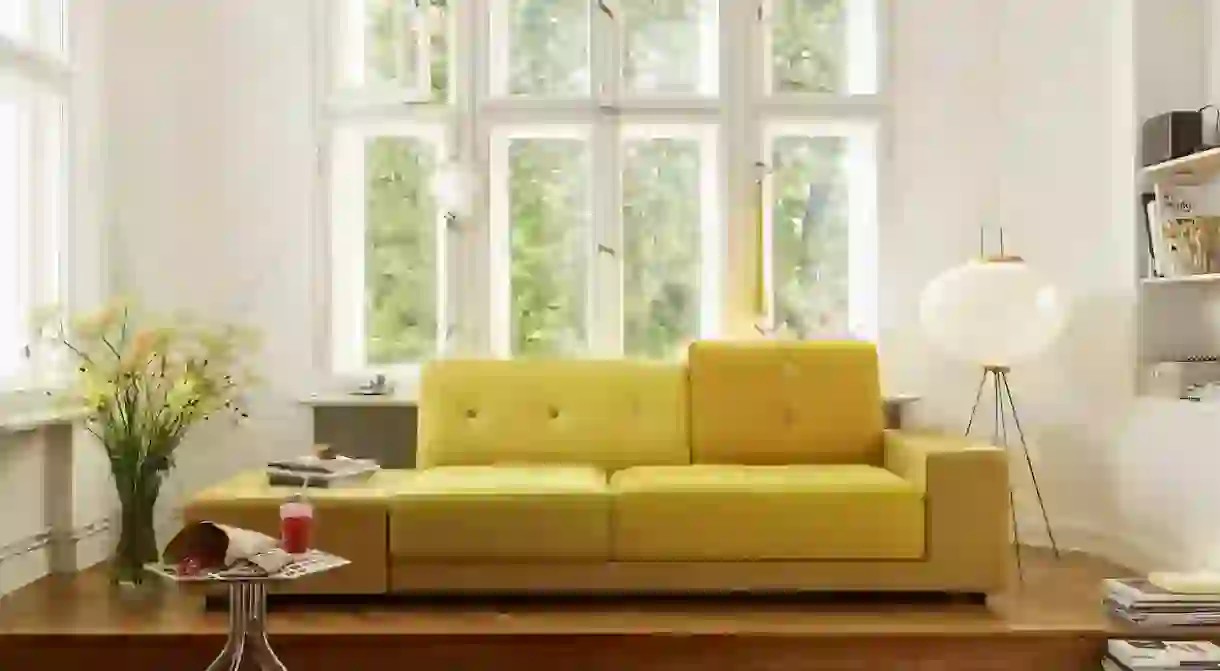Designer Hella Jongerius Reveals the Textile Industry’s True Colours

On launching her experimental Vlinder sofa at Milan Design Week, acclaimed Dutch designer Hella Jongerius speaks to Culture Trip about what’s wrong with the textile industry, redesigning classics and the secret to using colour in the home.
Hella Jongerius is known to be one of the world’s greatest colour experts, currently working as art director for colours and materials at Vitra, the manufacturer of classic furniture design pieces. Her work features in permanent collections at MoMa and the V&A, plus the Design Museum in London worked with Jongerius to curate her standalone exhibition Breathing Colour in 2017. Jongerius is renowned for her appreciation of colour, texture and playfulness with her latest design, the Vlinder sofa, being no exception. The patchwork-style piece launched at Salone del Mobile 2018 is a statement on the fast fashion industry, but also a mammoth experiment that explores what happens when you combine cutting-edge digital printing with age-old craftsmanship.

Culture Trip (CT): What makes Vitra’s new Vlinder sofa so special?
Hella Jongerius (HJ): The project was really an experiment with textiles in order to push the boundaries of the industry. It’s made up of seven different bindings, which is particularly difficult to do on such a large scale. The weavers at the mill were amazed this product would come out of their machines because the industry is quite ‘fast fashion’, meaning the fabrics they produce are often really basic because it has to be very cheap, i.e. no bindings and simple yarns. I wanted to react against this to keep the skills and the craft of weaving in the air, otherwise we will eventually lose it all!

CT: Why is this resurgence of craftsmanship so important in your opinion?
HJ: When I started my career 20 years ago I was already talking about connecting craft and industry. Since we now all live in a digital world where our heads are often somewhere else, I think it’s more important than ever. We need to have haptics, optics, textures and human scale in our lives, as well as a feeling of being present in the physical world, so that’s why this master study in textiles came about. We are defined by the things that surround us – it’s vital to have products that give something back and are actors who play a role in your life, not just stuff.
CT: How did you go about achieving this with the Vlinder sofa?
HJ: A sofa is a pretty difficult creature to design because when it comes to the shape of it, you can’t do that much; I mean, who wants to have a very sculptural thing in the house? It would be too large and impractical, so instead I wanted to focus on the skin, making the fabric really rich and tactile.

CT: As well as creating new products, you’ve updated a lot of Vitra’s classics in your time. How do you ensure you remain respectful to the essence of the design?
HJ: If you’re working with a masterpiece, then it is quite easy to update it because automatically some textures and colours won’t work. You have to study the era and the atmosphere in which the piece was made and you have to respect that. However, I’m always surprised by how many characteristics you can add to a product and it remains iconic because it’s often so ingrained in our memories. That’s why I’m never afraid to do something quirky. There are many people at Vitra who have an opinion and ultimately as I’m not the decision maker I feel free to play around. Admittedly in the beginning at Vitra I felt under pressure, thinking: ‘Oh my god, I am allowed to touch an Eames!’ But now I love to experiment and celebrate these pieces by breathing new life into them.

CT: How do you work with colour?
HJ: I see colour as a material and it has many faces. It’s not just a way of styling something; it’s a very important ingredient that can move you or send a certain message. I think the problem with the textile industry is the poor quality in the colours, and that’s why I wanted to address this by creating richer recipes. As a designer, I feel a responsibility to be a filter between the industry and consumer because I can see what we are lacking and what the possibilities are. Often with industrial colours it’s done on an economical level and tested until it’s so dead, which makes all the materials unattractive and flat. As consumers we want something else than these dead animals.
CT: How much do you practise what you preach when it comes to designing your home?
HJ: Personally, I don’t have a well-balanced designer home at all; instead I use it as a space to try things out, such as introducing a really strange cushion just to see how the fabric reacts with the rest of the décor. You have to trust your intuition. People are confident about their clothing and know what to wear, for example – you just need to apply this same self-confidence to your house.

CT: What should you consider when choosing furniture for your interior?
HJ: The floor is actually super-important, whereas the walls you can always paint later if you think they’re not working as a backdrop for a big piece of furniture such as a sofa. The light is really key for me, especially how it changes throughout the day, and what effect it has on colour. I enjoy the evening light in the mountains, the bright-red light of sunsets in Africa or the very blue light high up in Scandinavia.
The Vlinder sofa’s market launch is planned for early 2019 when a limited-edition ‘author’s version’ will be also available. To read more about Jongerius’ work, click here.













